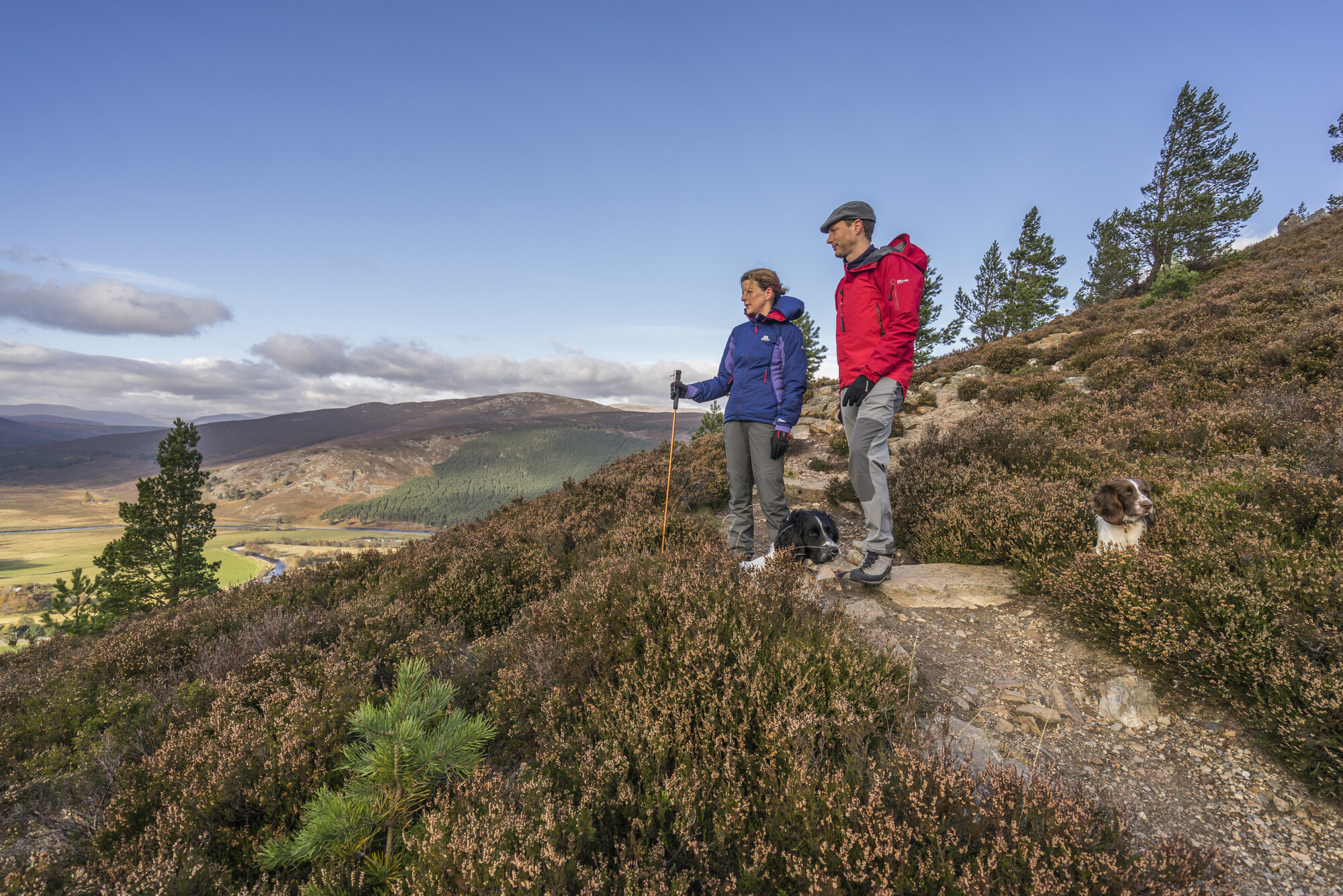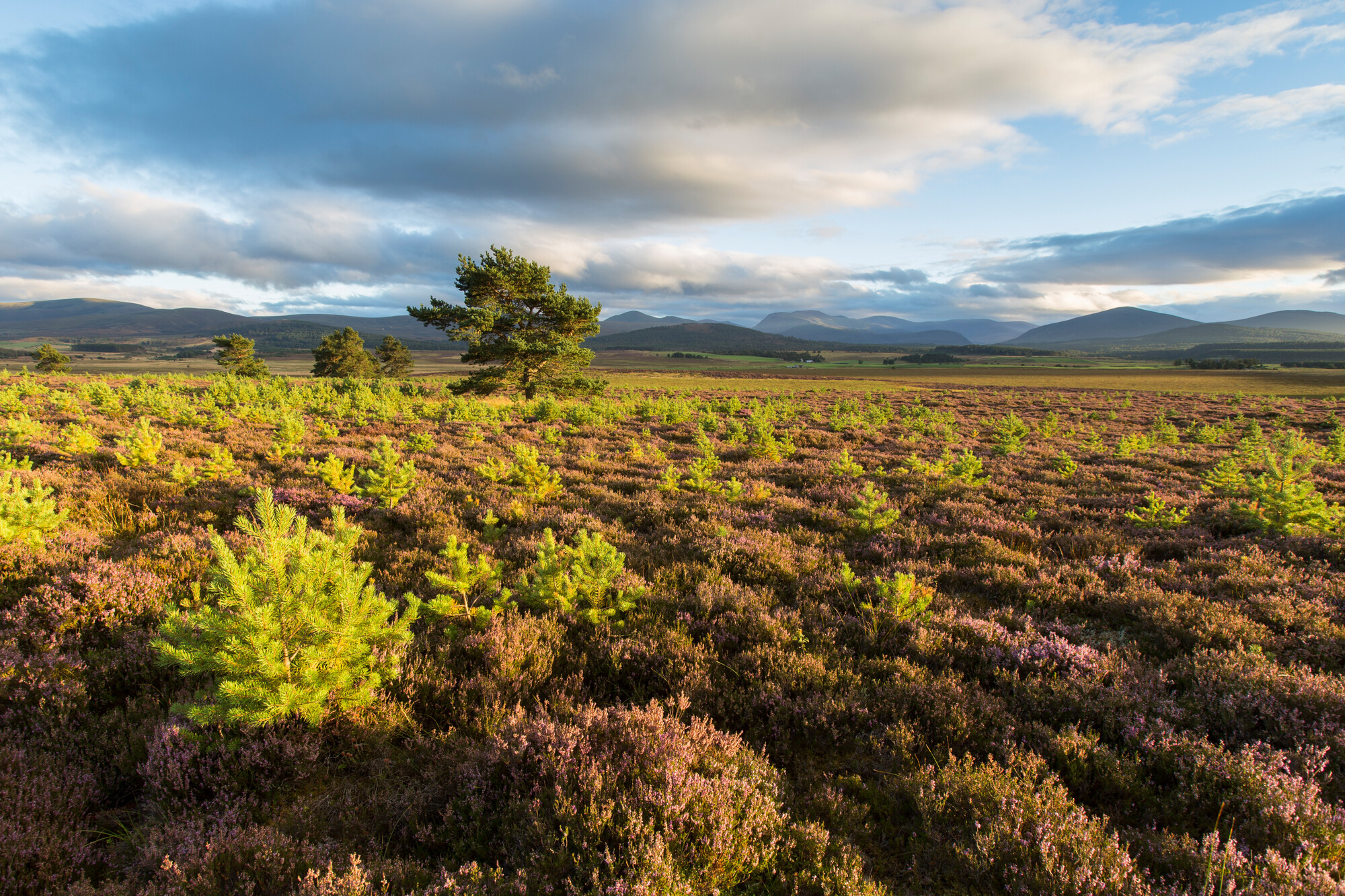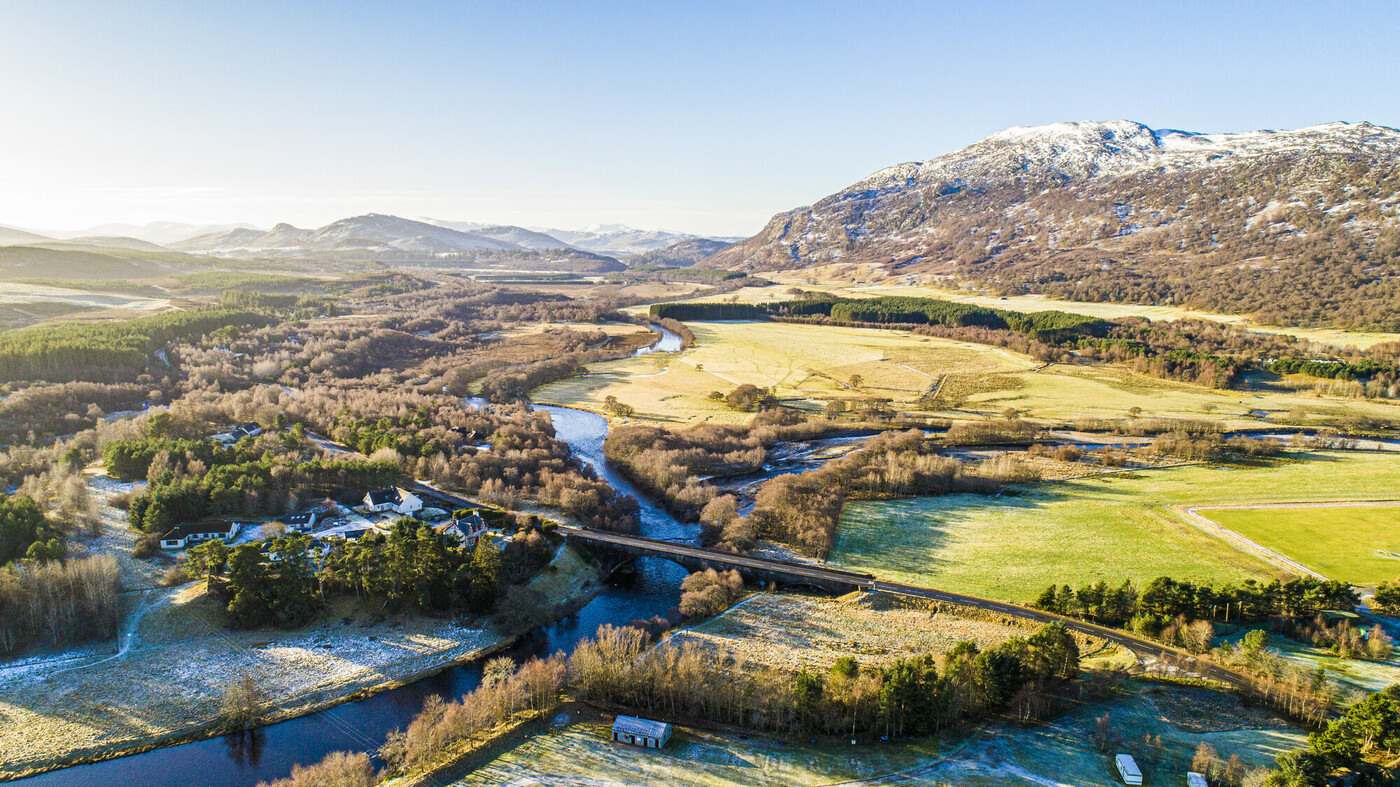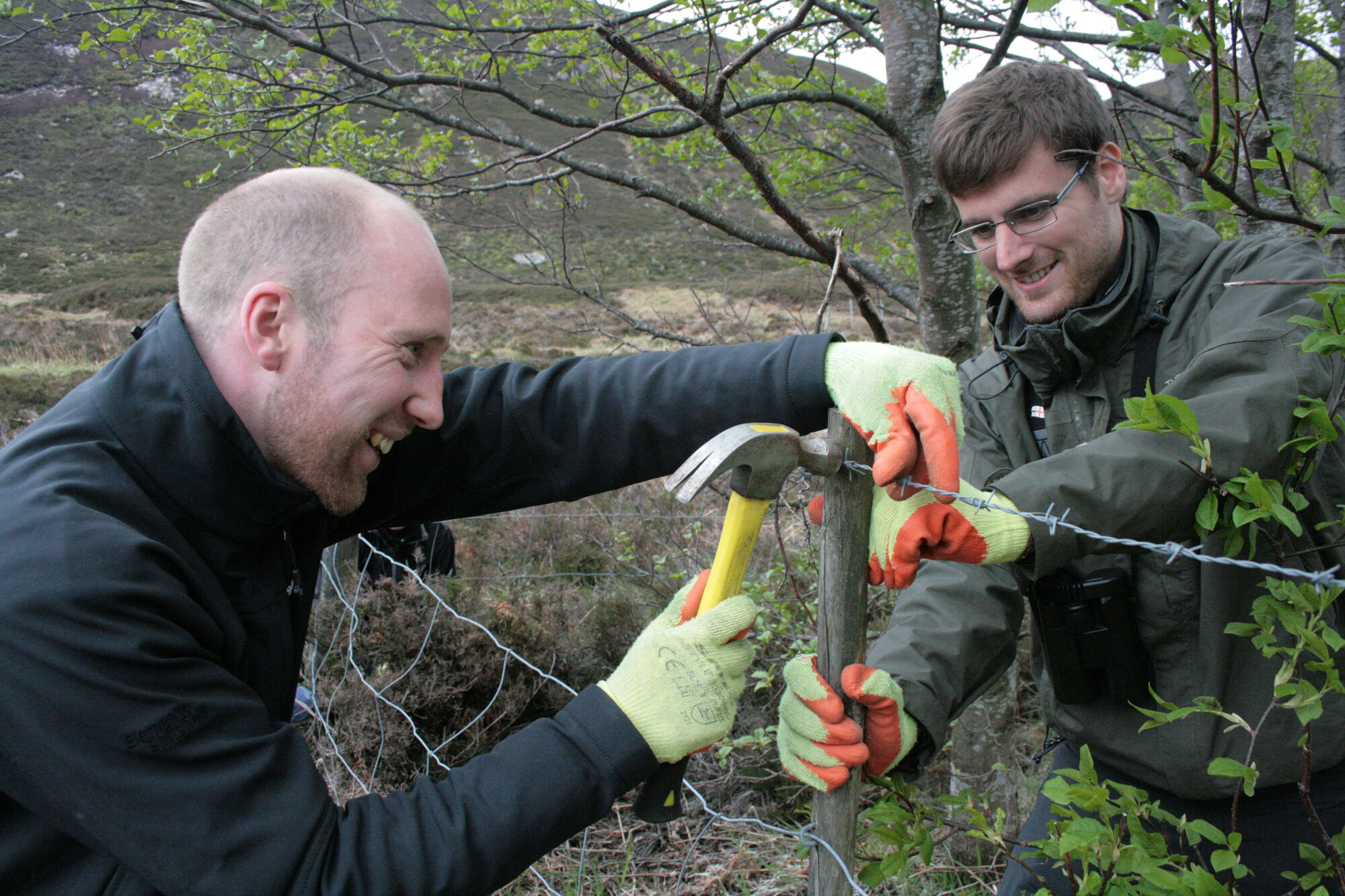Item 11 and Appendices 1 and 2: Clune Committee Report 20250047PAC
Cairngorms National Park Authority Ughdarras Pàirc Nàiseanta a’ Mhonaidh Ruaidh Item 11 Planning Committee 29 August 2025 Page 1 of 14
Windfarm committee report
Development proposed:
Clune Wind Farm – application under Section 36 of the Electricity Act 1989 for the construction and operation of a windfarm and energy storage facility within the Planning Authority of the Highlands Council, of 26 turbines with a tip height up to 200m. Anticipated generating capacity is 187.2MW.
Consultation from:
Scottish Government Energy Consents Unit
Reference:
2025/0047/PAC (ECU ref. ECU00005038)
Applicant:
Renewable Energy Systems Ltd. (RES)
Date consulted:
4 March 2025
Recommendation:
Object
Case officer:
Emma Bryce, Planning Manager (Development Management)
Cairngorms National Park Authority Ughdarras Pàirc Nàiseanta a’ Mhonaidh Ruaidh Item 11 Planning Committee 29 August 2025 Page 2 of 14
Cairngorms National Park Authority Item 11 Planning Committee 29 August 2025 Ughdarras Pàirc Nàiseanta a’ Mhonaidh Ruaidh Page 3 of 14
Purpose of report
The purpose of this report is to inform the committee decision and subsequent consultation response to the Scottish Government Energy Consents Unit (ECU) on an application submitted under Section 36 of the Electricity Act 1989 for a proposed windfarm located to the northwest of the Cairngorms National Park. The Scottish Government are the determining authority for this application as the output is more than 50MW. The application is accompanied by an Environmental Report (EIAR), which presents the findings of the applicant’s Environmental Impact Assessment (EIA).
The planning issues to be considered are confined to the effects of the proposed windfarm on the landscape character and Special Landscape Qualities (SLQs) of the National Park. All other matters, such as ecology, noise, general amenity, etc, are assessed by the decision maker (Scottish Ministers) with advice from statutory consultees.
Under the current working agreement on roles in landscape casework between NatureScot and the Cairngorms National Park Authority, NatureScot lead on the provision of advice on the effects on the SLQs caused by proposals outwith the Cairngorms National Park. Their advice has been used to inform this report.
Site description and proposed development
- The windfarm will be located within the Monadhliath on an elevated, open moorland which provides a backdrop from key slopes and summits from within the Cairngorms National Park. The site covers an area of approximately 3,300 hectares and comprises mainly grouse moorland with agricultural fields and mixed woodland at lower level. Clune Burn and Allt Lathach run through the site with other small tributaries running into the River Findhorn which lies to the north-west outside the site boundary. The site lies immediately adjacent to the National Park with the redline boundary adjoining the Park boundary to the northeast, approximately 5.5km south of Tomatin and 13km north west of Aviemore. The northeastern edge of the site is bounded by the A9. The nearest turbine would be approximately 0.9km from the Park boundary, with the other turbines, tracks and associated infrastructure located further away from the boundary.
Cairngorms National Park Authority Ughdarras Pàirc Nàiseanta a’ Mhonaidh Ruaidh Item 11 Planning Committee 29 August 2025 Page 4 of 14
The proposed development would comprise 26 turbines with a maximum height of 200m to the tip of the blade in an upright position and a rotor diameter of 162m. The associated infrastructure includes a site access, access tracks, crane hardstandings, underground cabling, on-site substation and maintenance building, energy storage facility, external transformers, temporary construction compounds, laydown area, batching plant and potential excavations / borrow workings. It is expected that the proposed windfarm would have an estimated total installed capacity of 187.2MW.
Theoretical visibility of the proposed windfarm from within the National Park is shown by the applicant’s EIAR figure 5.6a (Appendix 1). When considering cumulative visual effects, the applicant’s Figure 5.12 Cumulative – ZTV (Appendix 2) demonstrates the visibility of the proposed windfarm and the operational windfarms located to the north west of the Park boundary (Farr and Glen Kyllachy windfarms). The yellow areas show the increase in visibility of wind turbines with the introduction of the Clune Wind Farm and the green areas cumulatively with these existing windfarms.
Visualisations from 15 viewpoints were provided in the applicant’s EIAR to demonstrate the predicted level of visibility that would be had from within / on the boundary of the National Park – refer to Appendix 1 (Figure 5.6a Blade Tip ZTV with Viewpoints) for the locations:
- VP3: Core path LBA114
- VP5: A9 (Slochd)
- VP8: Carn Sleamhuinn
- VP10: Track near Gheal Charn Mor
- VP12: A9 (near Carrbridge)
- VP14: Carrbridge
- VP16: Carn na h‑Fhreiceadain summit
- VP17a: Meall a’ Bhuachaille
- VP17b Craiggowrie
- VP18: Achnahannet
- VP20: Braes of Balnagowan, Nethy Bridge
- VP21: A95 (near Dulnain Bridge)
- VP22: Cairngorm Mountain Railway Café
Cairngorms National Park Authority Ughdarras Pàirc Nàiseanta a’ Mhonaidh Ruaidh Item 11 Planning Committee 29 August 2025 Page 5 of 14
- VP23: Braeriach summit
- VP24: Creagan a Chaise
- Committee members should familiarise themselves with the above visualisations online before the meeting. The visualisations associated with each view point are available to the public by searching the application documents on the Energy Consents Unit website for the relevant figures within the EIAR — Volume 2b, Figures 5.1e to Figure 5.40h.
Relevant planning history
- February 2024 – the Park Authority responded to a scoping consultation from ECU for the current application.
Planning policy context
- The proposed development is located wholly outwith the National Park and therefore the Cairngorms National Park Local Development Plan policies do not apply. However, an assessment of the proposal must be made in accordance with National Planning Framework 4 (NPF4) and have regard to the National Park Partnership Plan (NPPP).
National policy
National Planning Framework 4 (NPF4) sets out national planning policies that reflect Scottish Ministers’ priorities for the development and use of land, as well as for operation of the planning system. It also identifies a series of ‘national developments’. The content of NPF4 forms the national element of the statutory development plan, which also includes the relevant Local Development Plan. Decisions on planning applications (and Section 36 applications) are to be made in accordance with the development plan, and as such NPF4.
Policy specifically relating to National Parks and development management can be found in NPF4 Policy 4: Natural Places and Policy 11: Energy. In general terms Policy 4 a) cites that development proposals which by virtue of type, location or scale will have an unacceptable impact on the natural environment, will not be supported.
Cairngorms National Park Authority Ughdarras Pàirc Nàiseanta a’ Mhonaidh Ruaidh Item 11 Planning Committee 29 August 2025 Page 6 of 14
NPF4 Policy 4 c) specifically applies to a National Park and states that “development proposals that will affect a National Park… will only be supported where: i. The objectives of designation and the overall integrity of the area will not be compromised; or ii. Any significant adverse effects on the qualities for which the area has been designated are clearly outweighed by social, environmental or economic benefits of national importance.”
NPF4 Policy 4 c) clarifies that the policy test applies where development proposals may affect a nationally designated landscape and so can be applied to development proposals outwith the National Park boundary but potentially affecting it. Of relevance to the generation of wind energy development nationally and therefore to the proposed development:
NPF4 National Development 3 ‘Strategic Renewable Electricity Generation and Transmission Infrastructure’ confirms that this class of national development supports renewable electricity generation, repowering and expansion of the electricity grid. It incorporates three types of development, including on and offshore electricity generation, including electricity storage, from renewables exceeding 50 megawatts capacity. The Clune Wind Farm proposal falls within the scope of National Development 3.
NPF4 Policy 11: Energy further clarifies that “b) Development proposals for wind farms in National Parks…will not be supported; and d) Development proposals that impact on international or national designations will be assessed in relation to Policy 4”.
Strategic policy
- The Cairngorms National Park Partnership Plan (NPPP) 2022 – 2027 is required under section 11 of the National Parks (Scotland) Act 2000. It is the management plan for the Cairngorms National Park approved by Scottish Ministers. The NPPP sets out how all those with a responsibility for the National Park will coordinate their work to tackle the most important issues. There is a duty for decision makers
Cairngorms National Park Authority Ughdarras Pàirc Nàiseanta a’ Mhonaidh Ruaidh Item 11 Planning Committee 29 August 2025 Page 7 of 14
to have regard to the NPPP, a requirement set out in Section 14 of the Act. As such, the NPPP is a material consideration in planning decisions.
The NPPP identifies that the landscapes of the National Park are valued by many and underpin the area’s economy. It contains policies to safeguard landscape interests. Of relevance to windfarm development proposals are policies A4 and C2 α).
Policy A4 seeks to conserve and enhance the SLQs of the National Park. Policy C2 a) seeks to support development of a low carbon economy and increase renewable energy generation where this is compatible with conserving the SLQs. In relation to windfarm development, the policy states that “large scale wind turbines are not compatible with the landscape character or special landscape qualities of the National Park. They are inappropriate within the National Park or in areas outside the National Park where they adversely affect its landscape character or special landscape qualities”.
Consultations
NatureScot advice
In accordance with the NatureScot / Cairngorms National Park Authority casework agreement, NatureScot have provided the Park Authority with advice in relation to the effects on the National Park, of the proposed windfarm both alone and cumulatively with other existing and consented windfarms in the surrounding area – see Appendix 3. This advice focusses on the effects of the proposed windfarm on the SLQs of the Cairngorms National Park.
The windfarm would be sited in the Monadhliath just outside the northwestern boundary of the Cairngorms National Park, west of the A9 and south of Strathdearn. The Monadhliath are a long range of rolling moorland hills and plateaux with no distinct summits or patterns, extending to between 550 and 850 AOD. These hills provide a backdrop from key slopes and summits from the National Park. The open nature of this landscape affords a high level of intervisibility across the hills. In terms of the baseline conditions, there are several operational and consented windfarms within the area. These are mostly in five
Cairngorms National Park Authority Ughdarras Pàirc Nàiseanta a’ Mhonaidh Ruaidh Item 11 Planning Committee 29 August 2025 Page 8 of 14
clusters, the majority of which are located in visually discreet, lower lying basins. Dunmaglass Wind Farm is the exception, located on a more elevated location. Glen Kyllachy and Farr are the closest operational windfarms, however when viewed from the National Park, along with Dunmaglass, these have limited influence, appearing relatively distant and compact features within the wider landscape. Tom nan Clach is the closest operational windfarm to the Park boundary, however given its lower height (125m to blade tip) and partial screening from landform, it also appears a compact feature within its wider context.
From higher elevations within the Park, operational and consented windfarms have relatively limited influence, both individually and cumulatively on the SLQs of the Park given their distance, heights (all are below 150m to blade tip), lack of turbine lighting and interspersed pattern of development. From lower levels no operational windfarms are visible.
NatureScot advise that the location and height of the proposed development represents a substantial shift in prominence and proximity of windfarms which have an impact on the SLQs of the Cairngorms National Park. The SLQs affected, in order of relevance are as follows:
- SLQ6 — Landscapes both cultural and natural
- SLQ10 – The surrounding hills
- SLQ30 – Grand panoramas and framed views
- SLQ32 — Dark skies
- SLQ28 – Wildness
SLQ6 — Landscapes both cultural and natural and SLQ10 – The surrounding hills, are considered together given their similar underlying characteristics relating to upland moorland hill and their perceived wildness. SLQ6 states ‘At lower levels and altitudes the land has been long inhabited, with patterns of land use, settlement and transport derived from the primary industries of farming, forestry and field sports. In contrast, the highest ground comprises uninhabited wild land and moor and mountain”. SLQ10 states ‘The ‘lesser hills’ within the Park have their own ridges, summits and plateaux and would be impressive in any other location… They contribute significantly to the wild, untamed appearance of the area’. Following assessment of the development on these SLQs, NatureScot conclude the proposed
Cairngorms National Park Authority Ughdarras Pàirc Nàiseanta a’ Mhonaidh Ruaidh Item 11 Planning Committee 29 August 2025 Page 9 of 14
development would represent a substantial change in its scale and proximity to the Park, introducing visibility of wind energy development to lower lying areas of the Park where there are currently no windfarms visible. From elevated and lower lying areas of Strathspey, turbines would appear across an area of uninhabited upland moorland and would dilute the contrast in landscape character, eroding the current distinction between cultural (settled strath) and natural (moorland hills) landscapes. The proposals would diminish the sense that surrounding hills are ‘under the dominion of nature’ and reduce the contribution of this part of the Monadhliath to the ‘wild, untamed appearance of the area.’ The adverse effects on these SLQs are considered to be significant.
SLQ30-– Grand panoramas and framed views relates to a range of views ‘from broad pastoral straths of green, over rolling hills of brown heather moor, with woodland at lower levels: and far, distant exposed mountain terrain… The assemblage of landscape features is aesthetically pleasing with views often framed by vegetation and landform, and the eye led to an inviting arrangement of hill slopes and glens’. NatureScot conclude there would be significant adverse effects on this SLQ as appreciated from a number of locations, routes and summits within the Cairngorm massif, including the Lairig Ghru, due to the vertical scale and proximity of the proposed turbines.
SLQ 32 – Dark Skies notes ‘At night, even the complete absence of colour, a pitch- black sky bespeckled only with the light of stars, is a distinctive feature as dark skies become increasingly rare in Britain’. The proposed turbine lighting would add a new layer of obvious bright red lights to uplands, incongruous with the current development pattern of lighting contained to the straths and would erode the underpinning characteristics of this SLQ. It is concluded there would be significant adverse effects on this SLQ across both upland and lower lying areas of the National Park.
SLQ 28 – Wildness notes that ‘Other areas of the Park are less remote, but the preponderance of near natural vegetation, together with distinctive wildlife and the general lack of development, can still give a perception of the dominance of nature. This includes the managed grouse moors, and the ancient, managed woods and plantations’. The Clune Wind Farm proposal would form a large and prominent
Cairngorms National Park Authority Ughdarras Pàirc Nàiseanta a’ Mhonaidh Ruaidh Item 11 Planning Committee 29 August 2025 Page 10 of 14
change, in both vertical and horizontal extent, diminishing the perceived extensiveness of the vast rolling moorland hills and eroding the current dominance of nature, by creating an obvious man-made focal point in views along the edge of the Park. The introduction of turbine lights would reduce the current sense of tranquillity and wildness from these parts of the Park to a degree that is considered significant. There would therefore be significant daytime and night-time effects on the Wildness SLQ from the Monadhliath and Strathdearn Hills.
- Consideration has been given to the cumulative effect the proposal has with the current application for the adjacent Balnespick Wind Farm (on the agenda for this planning committee as item 10). There is also a current application for the Highland Wind Farm (on the agenda for this planning committee as item 12), although this has not been considered in cumulative effects as NatureScot had not completed their appraisal of this windfarm on its own at the time of this appraisal. Balnespick Wind Farm would comprise 9 turbines (200m to blade tip) on the Strathdearn Hills and 0.6km from the Park boundary. Clune Wind Farm would be located 9.5km south west of Balnespick Wind Farm. The introduction of these windfarms would intensify the presence and influence of windfarm development from Strathspey surrounding elevated areas. From key summits the two proposals would redefine the northern and western Park boundaries and affect a greater portion of panoramic views and framed views towards the Monadhliath and Strathdearn Hills. The worst-case scenario of aviation lighting would include visibility of lights from the key summits of the Cairngorms massif and Meall a’ Bhuachaille and the Strathdearn Hills. Clune Wind farm would reduce the perceived extensiveness and naturalness of the Strathdearn Hills in southwestern views, while Balenespick would affect this experience in journeys northeast. From lower views, Clune would introduce a vertical man-made focal point to the western ridgeline and when seen with Balnespick on the northern skyline, would intensify the erosion of contrast between settled strath and uninhabited upland of the surrounding hills. The addition of Clune Wind Farm would intensify significant adverse effects found on SLQs 6, 10, 30 and 32 as a result of the Balnespick Wind Farm.
Cairngorms National Park Authority Ughdarras Pàirc Nàiseanta a’ Mhonaidh Ruaidh Item 11 Planning Committee 29 August 2025 Page 11 of 14
Appraisal
The policies of NPF4 and the NPPP set out how proposals outwith the boundary of the National Park should be considered in terms of effects on the National Park.
NPF4 Policy 11: Energy further clarifies that “b) Development proposals for wind farms in National Parks… will not be supported; and d) Development proposals that impact on international or national designations will be assessed in relation to Policy 4”.
Policy 4 a) cites that development proposals which by virtue of type, location or scale will have an unacceptable impact on the natural environment, will not be supported.
Policy C2 a) of the NPPP sets out a test for considering effects on the landscapes of the National Park, in that large scale wind turbines are inappropriate outside the National Park where they ‘adversely affect its landscape character or special landscape qualities’. If a proposal fails policy C2 a), it would also be in conflict with NPPP policy A4 which seeks to conserve and enhance the SLQs of the National Park.
The proposed windfarm is located within the northeast Monadhliath, on an elevated moorland in close proximity to the National Park boundary. It would introduce visibility of turbines to lower lying areas of the National Park for the first time. The proposal both individually and cumulatively with the proposed Balnespick Wind Farm, would affect five of the SLQs of the Cairngorms National Park during the day and associated lighting would extend these effects after dark. These impacts would result in evident and noticeable material changes to these SLQs such that the objectives of the designation and overall integrity would be compromised.
The nature, extent and level of significant adverse effects caused by the addition of Clune Wind Farm to the baseline of operational and consented wind farms is therefore considered to fail to meet the requirements of NPPP policies C2 a) and A4, and in turn NPF4 Policies 4 and 11. It is therefore recommended that the National Park Authority should object to the proposed Clune Wind Farm.
Cairngorms National Park Authority Ughdarras Pàirc Nàiseanta a’ Mhonaidh Ruaidh Item 11 Planning Committee 29 August 2025 Page 12 of 14
Recommendation
That members of the committee confirm that Cairngorms National Park Authority OBJECT to the application for the proposed Clune Wind Farm.
Cairngorms National Park Authority Ughdarras Pàirc Nàiseanta a’ Mhonaidh Ruaidh Item 11 Planning Committee 29 August 2025 Page 13 of 14
Appendix 1 — Clune Wind Farm: Proposed windfarm ZTV
Cairngorms National Park Authority Ughdarras Pàirc Nàiseanta a’ Mhonaidh Ruaidh Item 11 Planning Committee 29 August 2025 Page 14 of 14
Appendix 2 — Clune Wind Farm: Cumulative ZTV Operational Farr and Glen Kyllachy windfarms




